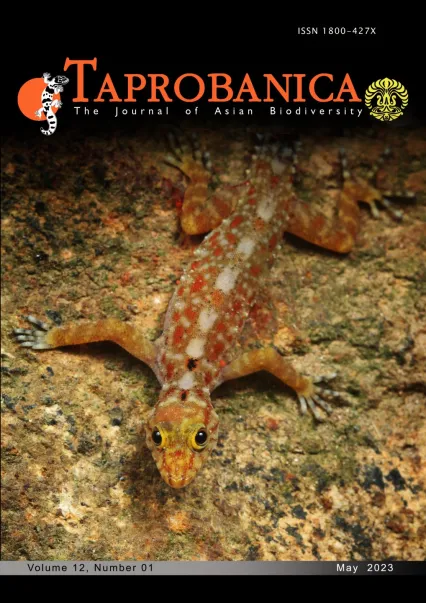

v12i1.304
Volume 12 | Number 1 | May 2023
Short Note
ISSN: 1800-427X (printed)
eISSN: 1800-427X (online)
DOI:10.47605/tapro.v12i1.304
Submitted date: 1 August 2022
Accepted date: 29 January 2022
Published date: 12 May 2023
Pp. 34–35, pl. 20
Abnormal nest of baya weaver (Ploceus philippinus) from north Gujarat, India
K.J. Patel & H.J. Patel*
*Corresponding author. E-mail: hirenp9408@gmail.com
The baya weaver, Ploceus philippinus is a widespread resident bird throughout the Indian Subcontinent and is commonly found in open cultivation usually near water, in grasslands and scrublands. Its breeding season depends primarily on the southwest and northeast monsoon lasting from April to October. The species is particularly known for its unique nests built by males in colonies. The number of nests in each colony varies from 2–250. The nest is a retort-shaped structure with a long vertical entrance tube, densely woven out of strips of leaves of paddy, sugarcane or coarse grass, and blobs of mud are fixed inside the dome near the egg chamber. Moreover, the nests are usually built on branches of trees that overhang a water body which protects it from rats and other terrestrial animals. A complete baya weaver nest is a retort-shaped construction consisting of three parts: stalk, body, and entrance tube. Sharma (1995) classified 16 types of abnormal nests based on structural, orientation, and abnormalities.
Section Editor: Sumudu Fernando
eISSN: 1800-427X (online)
DOI:10.47605/tapro.v12i1.304
Submitted date: 1 August 2022
Accepted date: 29 January 2022
Published date: 12 May 2023
Pp. 34–35, pl. 20
Abnormal nest of baya weaver (Ploceus philippinus) from north Gujarat, India
K.J. Patel & H.J. Patel*
*Corresponding author. E-mail: hirenp9408@gmail.com
The baya weaver, Ploceus philippinus is a widespread resident bird throughout the Indian Subcontinent and is commonly found in open cultivation usually near water, in grasslands and scrublands. Its breeding season depends primarily on the southwest and northeast monsoon lasting from April to October. The species is particularly known for its unique nests built by males in colonies. The number of nests in each colony varies from 2–250. The nest is a retort-shaped structure with a long vertical entrance tube, densely woven out of strips of leaves of paddy, sugarcane or coarse grass, and blobs of mud are fixed inside the dome near the egg chamber. Moreover, the nests are usually built on branches of trees that overhang a water body which protects it from rats and other terrestrial animals. A complete baya weaver nest is a retort-shaped construction consisting of three parts: stalk, body, and entrance tube. Sharma (1995) classified 16 types of abnormal nests based on structural, orientation, and abnormalities.
Section Editor: Sumudu Fernando
- List of Articles & Contents





